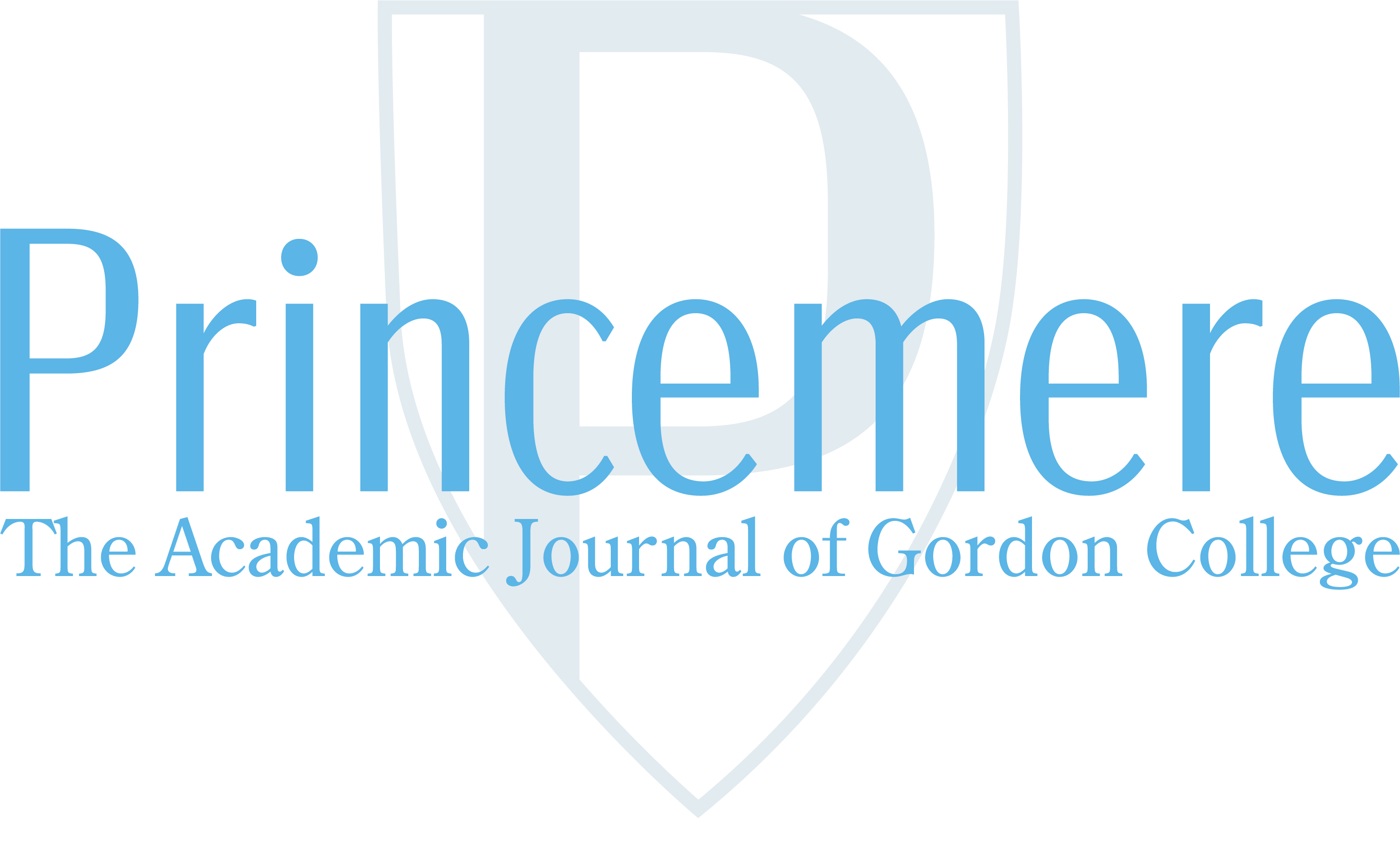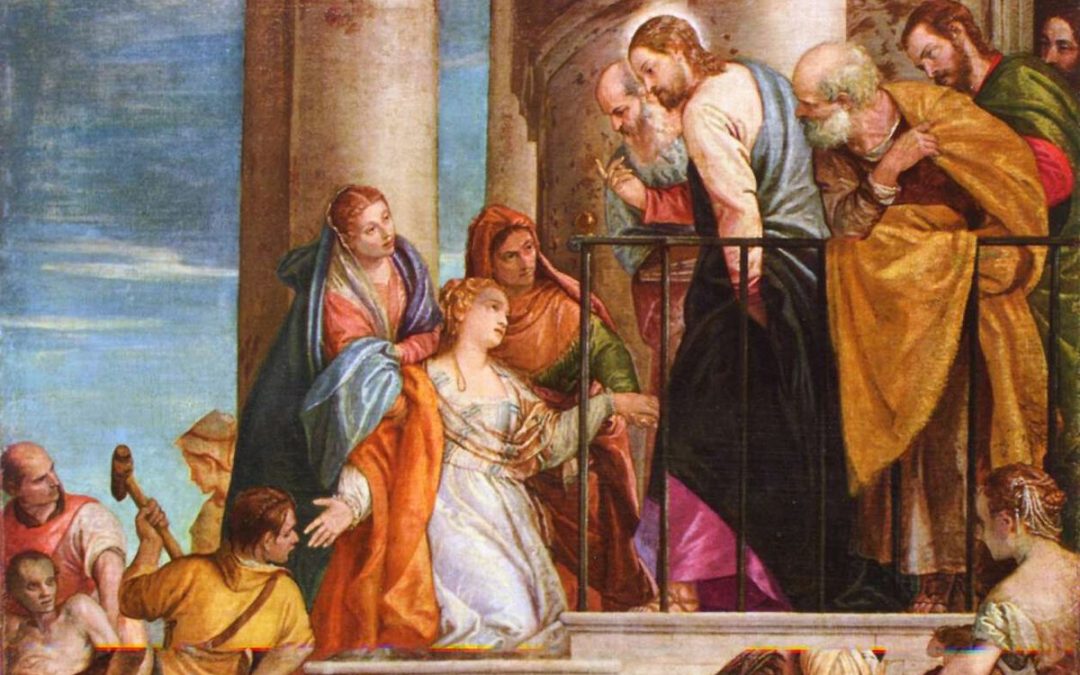Many early Christian theologians based their conceptualization of women on culture rather than scripture. Their teachings have influenced the Christian characterization of God and society’s valuation of women. In one view, Charles Hodge, a nineteenth-century Presbyterian theologian, claimed because woman was taken from man, she is inferior to him. He asserted, “She was created because of man…the purpose of her existence is not in herself” (Peppiatt 1). In a more moderate view, John Calvin, a sixteen-century theologian, both praised and blamed women as responsible actors equal to men, while contending women were “inferior creatures” with a restricted role to play (Potter 1). The complementarian position attests women and men are equal according to the biblical record, but have different tasks in the church and society. Conversely, the egalitarian position rejects the “equal but different” viewpoint and affirms that the Bible supports women’s equal participation in church and society (Scholz 84). In this paper, I will argue that many early valuations on women, ranging from the 1st century to the 13th century were not founded on scriptural truths and their primary purpose was to maintain the social hierarchy of female subordination. These aberrations were then perpetuated throughout church history and have lead to the repression of women and the devaluation of God’s stereotypical feminine attributes.
Rosemary Ruether, a leading Christian feminist theologian, argues that the oppressive patterns in Christianity toward women do not stem from specific doctrine, but from a patriarchal and hierarchical reading of Christian symbols. These symbols can be read as a system of domination or as a system of liberation, depending on the perspective of the reader (Ruether 83). With the introduction of the Christian faith into society, some women took the opportunity to reject their presubscribed gender roles. For instance, the Galatians formula “no longer male and female” was rooted in the pre-Pauline notion that humans were originally androgynous and separated into male and female only after the Fall. Thus, under this viewpoint, baptism was understood as the restoration of humans back to their original androgynous states. Some women in the early church embraced this statement, which allowed them to discard marital relations and head coverings during prayer (Ruether 84).
Modern egalitarian readings of Paul the Apostle see him as confused between his pre-Christian views on gender hierarchy and his contradicting line of thought in Galatians 3:28. In 1 Corinthians 11:8-9 he claims, “Man was not made from woman but woman from man. Neither was man created for the sake of woman, but woman for the sake of man. For this reason, a woman should have a symbol of authority on her head.” However, he later insists the two are independent, “Man is born from woman, and all things are from God.” It is thought Paul preferred the gender hierarchy to remain intact until the return of Christ, which he believed to be imminent. Ultimately in Paul’s thought, the relationship between gender hierarchy in the “original cosmic order of creation” and its “abolition in the new eschatological order anticipated in baptism” was left unresolved (Ruether 85).
However, later writers insisted that spiritual equality did not affect the cultural power dynamics of masters over slaves and husbands over wives. Ruether explains the cultural accommodation surrounding the first epistle to Timothy, written after Paul, which sought to affirm women’s subordination in the church and refute the assertion that Christ had overcome this established order. She writes, “Women are said to have been both created second after the male and also to have been guilty of originating humanity’s fall into sin” (85). Verses borne from similar mentalities were later added to Paul’s first epistle to the Corinthians; these state that it was shameful for women to speak in the church.
St. Augustine, who lived in the late 4th to early 5th century, struggled similarly to Paul in reconciling his view of women with the scriptures affirming all of humankind was formed in God’s image. He remedied this discrepancy by separating the spiritual nature of women’s souls from their physical bodies. He argued that women’s souls, like men’s, were made in God’s image and consequently could achieve redemption and eternal life. However, he maintained that the physical bodies of women were inherently sexual and therefore not representative of God’s image. Instead, they were “carnal” and “prone to sin” (Ruether 85). He maintained that even in God’s original creation of paradise, woman was created to be subjected to man as a wife and as a bearer of his children.
St. Thomas Aquinas, a 13th century Catholic priest and Doctor of the Church, contributed to the devaluation of women in the church. Parallel to his predecessors, he believed that the role of women was to be in subordination to men. However, one scholar notes that unlike other theologians who believe women’s subordination is a consequence of the Fall, Aquinas also believed that it was part of the natural order; “Since a ruler is required by the very nature of society, Aquinas says that there were rulers and subjects even before the Fall in the original state of innocence. Domination and subjection are not the result of sin, but are natural to man as a social being” (Popik 1). Thus from his standpoint, domination was created by God from the very beginning and is not a result of sin. Due to scripture and his Christian faith, Aquinas consented that women, like men, were formed in God’s image. However, he maintained that rational capacities, which are the signal of humanity, still predominate in men. In his writings, he implies that while women possess some level of rational reasoning, their creation was still an error; “In regard to nature taken as individual, a woman is something deficient and unintended because the active power, which is in the semen of the male, aims at producing something perfect resembling itself in accordance with the male sex” (McCluskey 2). He proceeds to attribute the female sex to “some disinclination of the matter” or even the humid southern winds. One history scholar comments, “Aquinas’s loaded language implies that males are the standard while females are a departure from that standard” (McCluskey 2). In his writings, Aquinas resigns women to the role of reproduction, but asserts that the responsibility of raising children falls to both genders. He did not believe women have enough rational ability to do so independently, and thus needed male guidance. Some historians believe that the origin of these assumptions regarding the supposed intellectual and emotional disparities between men and women arose due to the marriage practices of the time. Across Greek, Roman, and Jewish societies men were the primary economic units, while women attended to the internal family affairs. Subsequently, most men married around the age of thirty, while their female counterparts married in their mid-teenage years. Men believed themselves to be superior in aptitude, but failed to realize their wives were less experienced and emotionally mature due to their young age rather than a genetic failing (Loader 1).
Although this has become a somewhat common assumption in colloquial conversations on faith, there is little to no scholarly work to support it. In response to this falsehood, one scholar writes, “These historical prejudices have contributed to the belief that only men were directly created in the image of God, and women were then created in man’s image, one step removed from God.”
Then God said, ‘Let us make humankind (adam) in our image, after our likeness; and let them have dominion…’ And God created humankind in his own image, in the image of God created he him; male and female he them.’ Gen 1:26-27 clarifies that the Hebrew term adam stands for the generic species of humanity which is composed of men and women. (Horowitz 1)
In addition to the correct translation of the Hebrew, Genesis 5:2-3 also specifically refers to God forming all of humankind in His likeness. Horowitz proceeds to cite scriptural instances in which woman is used as a metaphor for God. She analyzes how the image of God in both man and woman allows us to transcend these separated masculine and feminine metaphors, which opens us to then transcend our historical selves and social institutions in recognition of the Holy One.
Horowitz credits an androcentric culture for the dismissal of the Biblical instances in which God is compared to and described as a woman. For instance, Deuteronomy 32:18 describes God giving birth. Isaiah 42:14 describes Him crying out like a woman in labor. Isaiah 49:15 says like a mother, He cannot forget His nursing child and that He has motherly compassion. Isaiah 66:13 says God will comfort like a mother. Matthew 23:37 describes Him as a mother hen gathering her brood under her wing.
These attributes of compassion, sacrifice, and nurturance did not originate in women, they originated in God. They are vital godly qualities, stereotypical to women, that are a reflection of His image.
Although woman’s reflection of God has been heavily disregarded throughout church history, there are instances in which it was respected. For example, St. John Chrysostom referred to Christ as our “friend, and member, and head, and brother, and sister, and mother.” A 14th century English recluse, Julian of Norwich, wrote: “Just as God is our Father, so God is also our Mother,” and described Christ as “our precious mother, Jesus.” Similarly, the 11th-century Archbishop of Canterbury, St. Anselm, called God, “the great mother” and even prayed, “Christ, my mother” (“Why is God Not Female?”).
There is significant issue with ignoring colloquial misperceptions of woman’s place in relation to God. First, these historical misperceptions resulted in oppression and have lead to prejudices that are still held to this day. For instance, women were not allowed to serve on jury duty for the majority of American history for a variety of reasons, one of which being their “defect of sex” (McDonald 1). All 50 states did not pass legislation allowing women to serve on juries until 1973 (“History Made”). Women were also not able to have financial independence until 1974 when the Equal Credit Opportunity Act was passed (“Equal Credit Opportunity Act”). Prior to this, it was not possible for them to open a bank account without permission from a husband or male relative. Although many of these sorts of injustices have been legally rectified in the past fifty years or so, this misogynistic culture of disparaging woman’s worth is still pervasive. This can be seen from a lack of women in leadership positions, whether in church or government, to the rampant sexual violence that disproportionately affects women (1 in 5 women and 1 in 71 men are raped in their lifetime in the U.S. (“Criminal Justice System”)). This violence rarely results in a prosecution (it is estimated about 995 out of 1000 perpetrators will walk free (“Criminal Justice System”)), and often goes unreported due to the social and emotional ramifications of the reporting process and the mistrust/blaming of victims. Mistrust of women’s reasoning has long been found in many police precincts. For instance, in 2019, there were an estimated 200,000 rape kits that sat untested in police storage across the country, partially due to clerical issues and partially due to police choosing not to test kits because they did not believe the victims. (Nyce 1). These prejudices against women are also often found within the church, where the place of women is still largely contested. Many evangelical Christians promote a very literal reading of scripture and have come to the conclusion that women should not teach or have spiritual authority over men (Lowik 1). These evangelicals also maintain that wives must submit to their husband’s authority; although research suggests this gender inequality is responsible for domestic abuse being higher within these communities (Nash 1). Our misogynistic culture not only harms women, it detracts from our perception and characterization of God. When we disrespect women and the qualities stereotypically found within them (sensitivity, gentleness, nurturance, etc.), we devalue His feminine attributes and the scriptures in which He is compared to women. If we do not respect women as mothers, then why should we respect when God is described as a mother?
In order to remedy these misperceptions, we must disengage from the male-centric historical understanding of women, instead realigning our perceptions with scriptural truths.

Brianna Quinn
Brianna Quinn is a sophomore English major from Camden, Maine. She is a staff editor for the Idiom, reporter for the Tartan, and virtually tutors students in Korea. She loves writing and enjoys reading poetry, especially from the romantic period

